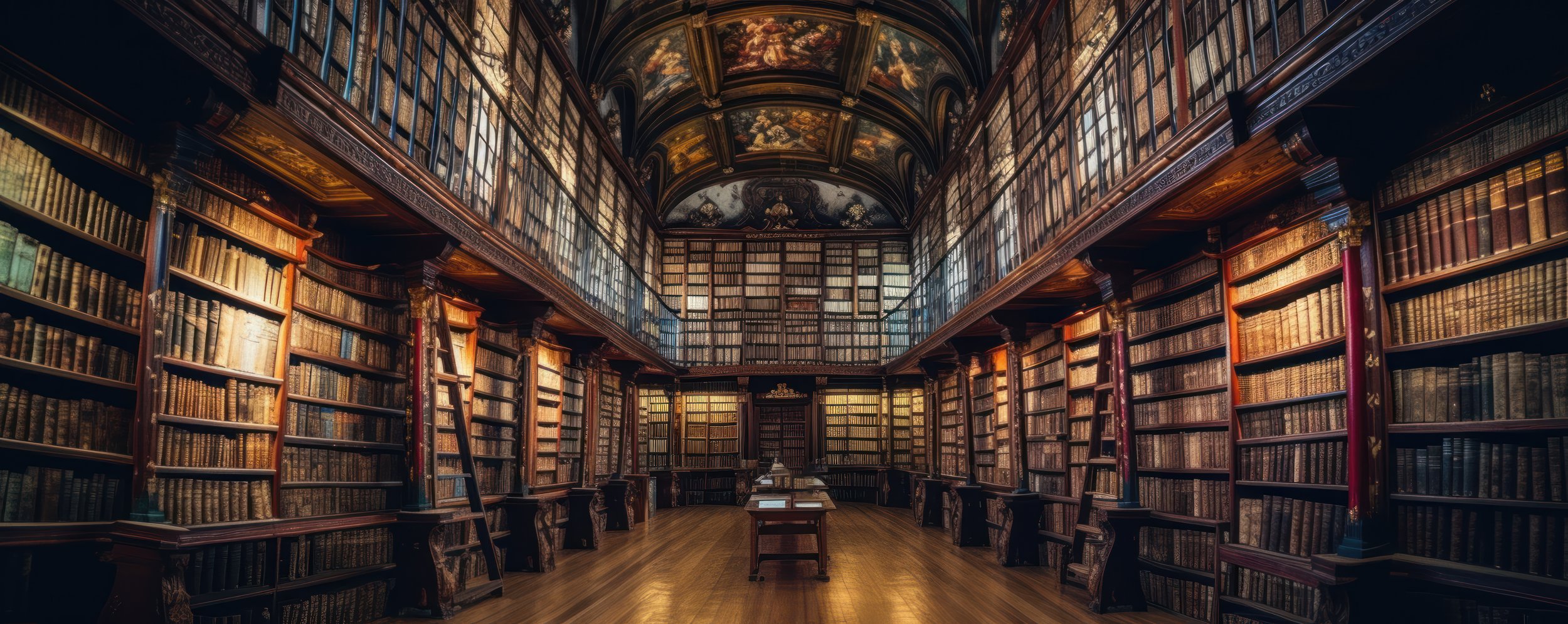Unveiling the Craft: Exploring the Role of an Art Appraiser
Step into the captivating world of art appraisal, where expertise and insight converge to unveil the intrinsic value of artistic mastery. As art continues to transcend boundaries, the role of an art appraiser becomes increasingly vital. Beyond just assessing market value, art appraisers serve as custodians of culture, deciphering the nuances that make each piece a timeless expression.
A fine art appraiser’s discerning evaluation can not only substantiate the worth of a piece of art but also document its narrative, tracing its journey from creation to the present day.
Unravel the enigma of the art world as we delve into the multifaceted responsibilities of art appraisers, their indispensable contribution to collectors and creators alike, and the synergy between art and valuation.
The role of an art appraiser
Art appraisers play a pivotal role in the art world, wielding their expertise to evaluate and determine the value of various art pieces. Their responsibilities extend beyond mere monetary assessment, encompassing a deep understanding of art history, provenance, and market trends. By meticulously scrutinizing the nuances of each artwork, art appraisers unravel the stories and significance encapsulated within the canvas, sculpture, or any other artistic medium.
Art appraisers serve as guardians of artistic integrity, ensuring that the value ascribed to a piece is reflective of its cultural, historical, and aesthetic worth. Their discerning eye and comprehensive knowledge enable them to provide invaluable insights to collectors, institutions, and artists, guiding them in understanding the true essence and significance of the art they possess or create.
The art appraiser’s role transcends mere evaluation; it is a nuanced blend of art history, market analysis, and preservation of cultural heritage. Their expertise serves as a bridge between the tangible and intangible aspects of art, shedding light on the profound narratives woven into each masterpiece.
Importance of art appraisal
Art appraisal stands as a cornerstone in the art market, underpinning the entire ecosystem of buying, selling, and preserving artworks. The process of art appraisal not only assigns a monetary value to a piece but also documents its contextual and historical significance. By engaging in meticulous research and analysis, art appraisers contribute to the preservation and understanding of diverse artistic genres, movements, and individual creations.
The significance of art appraisal extends beyond individual transactions, permeating the realms of art conservation, insurance, estate planning, and philanthropy. Through their expertise, art appraisers facilitate informed decision-making, ensuring that the intrinsic value of art is upheld and appreciated across generations. Moreover, their role in tracing the provenance of artworks fosters transparency and trust within the art market, safeguarding against forgeries and misattributions.
Qualifications and skills required to be an art appraiser
Becoming an art appraiser demands a blend of specialized knowledge, practical experience, and a discerning eye for artistic detail. While there are no rigid academic prerequisites, a strong foundation in art history, connoisseurship, and valuation principles forms the bedrock of art appraisal expertise. Many aspiring art appraisers pursue formal education in art history, fine arts, or related disciplines to cultivate a deep understanding of artistic movements, styles, and cultural contexts.
In addition to academic qualifications, practical experience and mentorship under seasoned art appraisers are invaluable for honing the skills required for this specialized profession. Developing a keen eye for authenticating artworks, discerning quality, and unraveling the narratives woven into art pieces is a hallmark of an adept art appraiser. Furthermore, proficiency in research methodologies, market analysis, and legal frameworks governing art transactions is crucial for navigating the complexities of art appraisal.
Effective verbal and written communication skills are indispensable for articulating the findings of an art appraisal in a clear, concise, and persuasive manner. Mastery of appraisal methodologies, ethical guidelines, and industry standards further distinguishes a proficient art appraiser, ensuring the integrity and credibility of their evaluations.
The process of art appraisal
Art appraisal encompasses a systematic process that integrates a multitude of factors, from art historical research to market analysis and condition assessment. The journey of appraising an artwork commences with a comprehensive examination of its physical attributes, including dimensions, medium, condition, and any visible signatures or markings. This initial scrutiny forms the basis for determining the authenticity and provenance of the artwork, laying the groundwork for its valuation.
Subsequently, art appraisers delve into the historical and contextual dimensions of the artwork, tracing its lineage, previous ownership, exhibition history, and any relevant documentation that corroborates its authenticity and significance. This phase of art appraisal demands rigorous research, often involving consultation with archival sources, experts in specific artistic genres, and provenance databases to corroborate the artwork's history and cultural relevance.
Following meticulous examination and research, art appraisers conduct a comprehensive market analysis, taking into account recent sales of comparable artworks, current demand for similar pieces, and prevailing trends in the art market. This comparative analysis forms the basis for ascertaining the fair market value of the artwork, considering factors such as rarity, artist prominence, and aesthetic appeal.
The culmination of the art appraisal process is the formulation of a detailed appraisal report, encapsulating the findings, methodologies employed, and the final valuation of the artwork. This document serves as a testament to the art appraiser's expertise and diligence, providing invaluable insights to collectors, institutions, and legal entities seeking to understand the worth and significance of the artwork.
Different types of art appraisals - insurance, resale, donation
Art appraisals encompass an array of contexts and purposes, each demanding a nuanced approach tailored to its specific requirements. Insurance appraisals are a crucial facet of art appraisal by determining the replacement value of artworks for insurance coverage. Art appraisers meticulously analyze the market surrounding the artwork, factoring in its artistic significance, condition, and prevailing market trends to determine the appropriate insurance coverage.
Resale appraisals, on the other hand, are geared towards establishing the fair market value of artworks with the intention of selling or acquiring them. Art appraisers analyze market data, sales trends, and the specific attributes of the artwork to provide an accurate valuation that aligns with current market dynamics. Their expertise in discerning market fluctuations and assessing the desirability of artworks equips sellers, buyers, and intermediaries with the insights needed to make informed decisions in the art market.
Donation appraisals hold immense significance in the realm of philanthropy and cultural stewardship, as they aid in determining the fair market value of artworks being gifted to charitable organizations, museums, or educational institutions. Art appraisers play a pivotal role in ensuring that the valuation of donated artworks adheres to the stringent IRS regulations, providing assurance to donors and recipient entities alike.
The diversity of art appraisals underscores the multifaceted expertise and adaptability of art appraisers, who navigate the intricacies of valuation across varied contexts, contributing to the transparency and integrity of art transactions.
Challenges faced by art appraisers
While art appraisal is a profession steeped in expertise and connoisseurship, it is not without its inherent challenges. The subjective nature of art, compounded by the complexities of provenance research and market volatility, presents art appraisers with unique hurdles in their pursuit of accuracy and credibility. While appraisers are not authenticators, the process of authenticating artworks, especially in the absence of comprehensive documentation, demands astute discernment and rigorous investigative skills to validate their origins and historical significance.
Market fluctuations and evolving tastes further compound the challenges faced by art appraisers, necessitating a keen awareness of contemporary art trends, collector preferences, and the global art landscape. Adapting to these dynamic dynamics while upholding the principles of ethical appraisal requires art appraisers to constantly refine their knowledge base and analytical acumen.
Moreover, the proliferation of forgeries and counterfeit artworks poses a significant challenge to art appraisers, underscoring the need for advanced technological tools, scientific analysis, and collaboration with forensic experts to ensure the authenticity of appraised artworks. Striking a balance between the artistic merit and commercial value of artworks amidst these challenges demands an unwavering commitment to precision and integrity from art appraisers.
The impact of art valuation on the art market
Art valuation serves as a linchpin in the art market, influencing the dynamics of buying, selling, and collecting artworks on a global scale. The accurate assessment of an artwork's value not only substantiates its market worth but also shapes the perception of its cultural and historical significance. Art valuation exerts a profound influence on the investment potential of artworks, guiding collectors, investors, and institutions in making informed decisions regarding acquisitions, sales, and long-term ownership.
Furthermore, art valuation engenders transparency and trust within the art market, mitigating the risks associated with speculative pricing and counterfeit artworks. By providing a standardized framework for assessing the worth of art, valuation practices contribute to the stability and credibility of art transactions, bolstering the confidence of stakeholders in the art ecosystem.
The impact of art valuation reverberates through the broader cultural landscape, shaping the narratives of artistic legacies, the preservation of heritage, and the accessibility of art to diverse audiences. As art valuation intersects with economic, social, and aesthetic dimensions, its significance extends far beyond monetary considerations, underscoring the enduring legacy of art as a reservoir of human creativity and expression.
Art appraisal courses and certifications
Aspiring art appraisers seeking to embark on a path in this specialized field have access to a myriad of courses and certifications designed to cultivate the requisite knowledge and skills. Accredited educational institutions offer programs in art appraisal, encompassing modules on art history, connoisseurship, valuation methodologies, and legal frameworks governing art transactions. These courses provide a comprehensive understanding of the art market, equipping students with the tools to navigate the complexities of art appraisal with precision and expertise.
Additionally, professional organizations such as the Appraisers Association of America, the International Society of Appraisers, and the American Society of Appraisers offer specialized certifications for art appraisers, validating their proficiency and adherence to industry standards. These certifications serve as a hallmark of credibility and competence, instilling confidence in clients and stakeholders seeking the services of qualified art appraisers who adhere to the Uniform Standards of Professional Appraisal Practice (USPAP).
Continuous professional development and engagement with industry best practices are integral to the evolution of art appraisers, who must stay abreast of the latest advancements in art research, technology, and ethical guidelines. By pursuing ongoing education and certification, art appraisers demonstrate their commitment to upholding the highest standards of expertise and integrity in the realm of art appraisal.
Art appraisal services and how to find a qualified appraiser
Art appraisal services encompass a diverse array of offerings, catering to the needs of collectors, institutions, legal entities, and individuals seeking to ascertain the value and authenticity of artworks. Qualified art appraisers provide comprehensive appraisal reports, encompassing detailed evaluations, provenance research, market analysis, and valuation methodologies tailored to the specific requirements of their clients.
To find a qualified art appraiser, individuals and organizations can turn to reputable professional associations and organizations specializing in art appraisal, which maintain directories of accredited appraisers. These directories serve as a reliable resource for identifying art appraisers with the requisite expertise and certifications, ensuring that clients engage the services of proficient professionals. If you are seeking an art appraisal in Chicago, IL, please contact Lindsey Owen Appraisals at info@loappraisals.com or call (312)783-8749.
Moreover, seeking referrals from collectors, art dealers, and industry experts can yield valuable insights into identifying experienced and reputable art appraisers. Recommendations from trusted sources serve to validate the competence and trustworthiness of art appraisers, providing assurance to clients seeking reliable appraisal services.
Engaging with art appraisers who demonstrate a comprehensive understanding of the specific artistic genre, historical period, or cultural context relevant to the artwork in question further enhances the quality and relevance of the appraisal. By fostering a collaborative partnership with qualified art appraisers, clients can gain invaluable insights into the value, provenance, and significance of their artworks, enriching their understanding and stewardship of artistic legacies.
Conclusion
The role of an art appraiser transcends mere valuation, weaving a narrative that intertwines art history, connoisseurship, and market dynamics. Their discerning eye and meticulous research illuminate the intrinsic worth and cultural significance of artworks, enriching the understanding and preservation of human creativity.
As custodians of artistic heritage, art appraisers navigate the complexities of art appraisal with precision and expertise, safeguarding the integrity and authenticity of artistic legacies. Their invaluable contributions permeate the realms of collecting, conservation, and cultural stewardship, shaping the narratives of art for generations to come.




